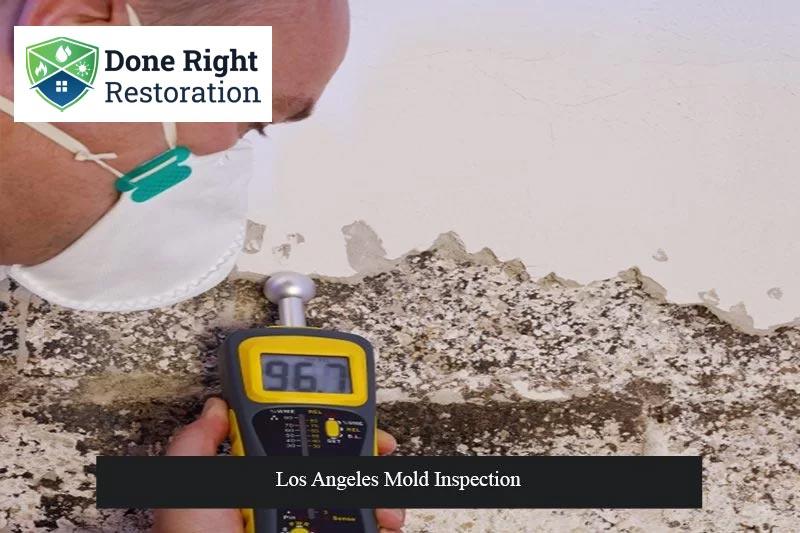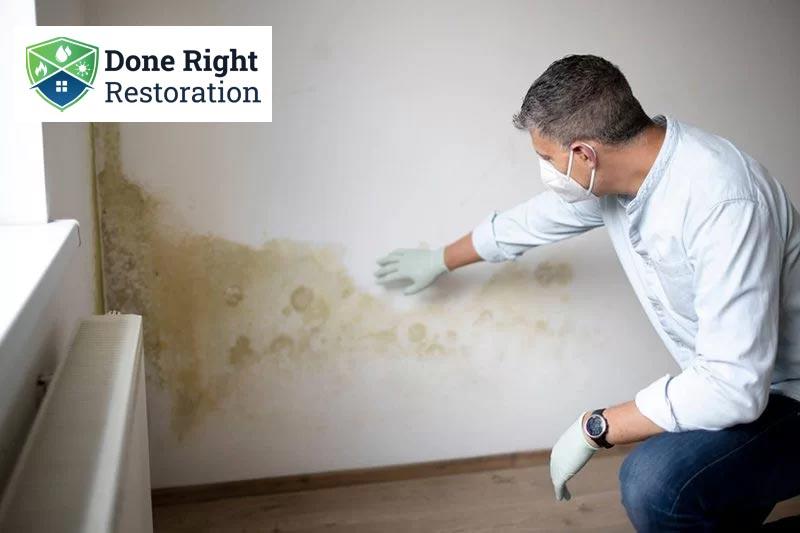Los Angeles mold inspection conducted by a certified professional can help identify and locate mold growth in your home, determine its severity, and recommend appropriate remediation measures. Regular mold inspections can also help prevent costly damage to your property and ensure the safety and well-being of your family.

Los Angeles mold inspection is an essential service for every homeowner in the city. Mold spores are everywhere, indoors and outdoors, and can grow and thrive in moist environments such as bathrooms, basements, and attics. In addition, mold is unsightly and poses a potential health risk, especially to individuals with allergies, asthma, or weakened immune systems.
Mold is dangerous and so before the problem escalates, you must get the property inspected by a professional team. Here are some signs indicating a mold build and you must arrange for an inspection.
| Rotten smells | Can you sniff a damp & musty odor from the floors and walls? It can be due to mold volatile organic compounds and you will need to arrange for an inspection. |
| Contaminated carpets | Carpet areas and rugs are often breeding grounds for mold at home. Take a close look at the carpet and if you can sniff odors & see stains on the carpet, then you have a problem |
| Allergy or Asthma flare-ups | Some species of mold may have harmful substances such as mycotoxins. This can trigger respiratory problems and if you sneeze & cough excessively, it is essential to arrange for an inspection. |
| Warped walls | This is another indicator of mold problems and you must arrange for an inspection instantly, |
It’s well known that mold thrives in Los Angeles’ excessive humidity and dampness. Mold can cause breathing issues and damage your home’s structure. That’s why a professional mold inspection in Los Angeles can detect mold growth, assess the situation, and recommend a solution.
Visual inspections must begin a full Los Angeles mold inspection. This phase entails inspecting the entire property for mold and water damage. Visual inspections identify mold-prone areas like leaky pipes, dampness, and water damage.
In addition, attics, basements, crawl spaces, and the outside should be inspected. To document mold, take images. Visual inspections can detect and prevent mold growth, which can cause health problems and expensive treatment.
Los Angeles mold inspection must include sample collection. Samples must be collected using the correct methods and equipment to ensure accuracy. The trained inspectors use industry-standard methodologies to gather air, surface, and bulk samples from diverse property regions.
Our experts collect samples from mold-prone environments like water or dampness and send samples to accredited labs for analysis. The inspectors use the analysis to guide remedial and prevention options for property owners.
Moisture assessments are crucial to Los Angeles mold inspections. For example, a faulty pipe, busted water heater, or high humidity can foster mold growth. Moisture assessments locate moisture sources and measure air relative humidity. Moisture meters and thermal imaging can also detect concealed moisture. As a result, experts can identify high-moisture areas and create a mold remediation plan. Preventing mold formation and maintaining a healthy house or business requires moisture management.
Los Angeles mold inspection requires air quality testing. Mold can pollute indoor air and harm people. Air quality testing examines building air for pollutants and chemicals that may harm occupants.
Done Right Restoration use cutting-edge equipment to evaluate pollution concentrations and offer ways to improve building air quality. The professionals quickly and accurately diagnose air quality issues and develop efficient remediation plans.
LA mold inspection requires an HVAC system check. HVAC systems propagate mold throughout a building. The inspectors extensively inspect HVAC systems for mold. Mold is checked in air ducts, filters, and other system components.
Our professionals monitor HVAC system temperature and humidity, which can cause mold growth. Experts can detect and stop mold spread by evaluating HVAC systems and diagnosing and preventing mold growth.

Mold inspections must find the source. Our professionals use cutting-edge equipment and methods to find mold sources in your home or company. Experts employ infrared cameras and moisture meters to find concealed mold development during visual and physical inspections.
Then, the mold inspectors perform thorough inspections and recommend avoiding mold growth, guaranteeing a healthier and safer living environment.
Here are some of the common inspection techniques that we use at DNR Restoration
| Mold Inspection Technique | Description | Time Taken for Results |
| Visual Inspection | A thorough visual examination of the property, including walls, ceilings, floors, HVAC systems, and other areas for visible signs of mold growth or water damage. This may also include the use of moisture meters or thermal imaging cameras to identify areas of potential moisture intrusion. | Same day |
| Air Sampling | Collecting air samples from different areas of the property to measure the concentration of mold spores in the air. This may be done using a spore trap or a cassette sampler, and the samples are typically analyzed in a laboratory to identify the types and levels of mold present. | 1-3 days |
| Surface Sampling | Collecting samples from suspected mold growth areas, such as swabbing or tape lifting, to directly test for the presence of mold on surfaces. These samples are then analyzed in a laboratory to identify the types and levels of mold present. | 1-3days |
| Bulk Sampling | Collecting physical samples of materials, such as drywall or insulation, suspected of containing mold. These samples are typically sent to a laboratory for analysis to determine the types and levels of mold present. | 1-7 days |
| Moisture Mapping | Using moisture meters or thermal imaging cameras to map the moisture levels in different areas of the property to identify potential moisture sources that may contribute to mold growth. | Same day |
The size, kind, and extent of mold damage determine inspection prices. Los Angeles mold inspections cost $250–$500. Mold found during the examination may boost treatment costs. Neglecting mold growth can cause structural damage and health problems.
Mold growth should be addressed immediately to avoid damage and expenses. Hire a reliable mold inspection service in Los Angeles that uses advanced equipment and methodologies to ensure complete and accurate inspection findings.
Thorough mold inspection analyses test data to determine the kind and severity of mold in your Los Angeles property. Technicians accurately interpret complex test data and help you understand your home’s environment to prevent mold growth and protect your health.
For healthy indoor air, houses and businesses need mold inspections. Los Angeles mold inspection detect mold early, avoid contamination, and provide successful treatment programs. However, untreated mold infestations can cause serious health issues and property damage. Contact qualified mold inspector from Done Right Restoration must inspect your home if you suspect mold growth.
No, it is not possible to have 100% mold-free space in the property interiors. All properties have some form of airborne mold and it is never zero.
There is no conscious estimate regarding the types of mold and it could be from tens to thousands. If you tell us your specific property address, we will educate you on the type of mold, you may have to worry about.
A professional mold inspection team can help to identify hidden areas of water damage and mold growth. The inspection will also throw light on the underlying causes of mold growth.
If you can see mold but cannot smell it, then it is dormant. Mold can hide behind walls and if the space does not have moisture, it will not grow. This is the reason for the absence of gassing or odor. Dormant mold can still create health problems and you must have it removed.